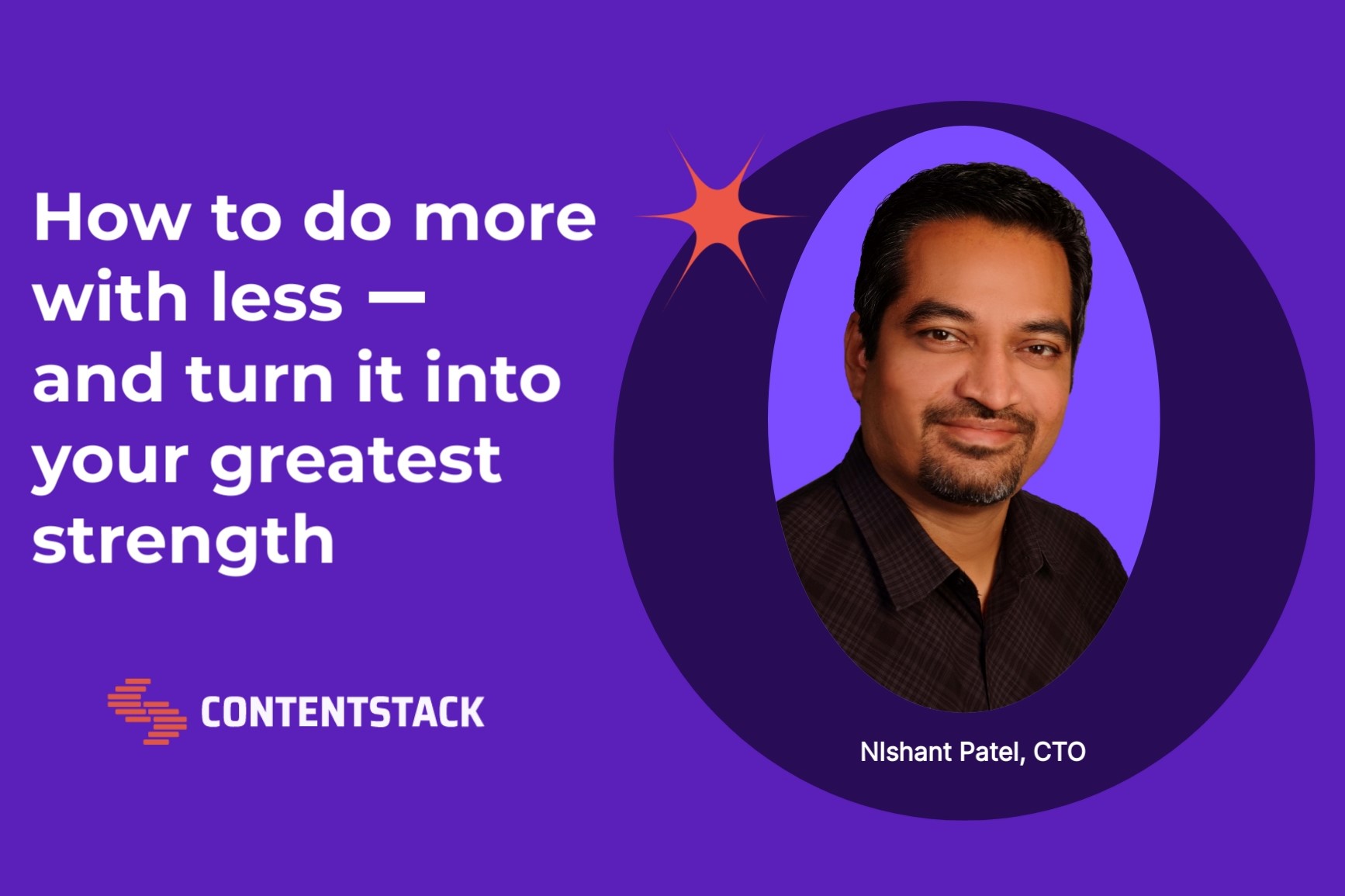How to do more with less — and turn it into your greatest strength

At some point in our careers, we’ve all heard this phrase: “We’re going to have to do more with less.”
We don’t have enough people. We didn’t allocate enough budget. That deadline is coming up pretty quickly.
It’s a response that can make our stomachs sink and our palms sweat.
But on the other hand, more is not always better. More does not always guarantee a successful outcome. It’s what you do with the “less” that matters — something that became even more important during the pandemic for our customers, Icelandair.
While Icelandair services several markets, their team is still quite small. When the pandemic hit, their content team – Hallur Þór Halldórsson (digital product manager), Edvardas Paskevicius (content manager), and Óskar Völundarson (UX copywriter) – had to figure out how to create and update more content with fewer resources in a way that would make a measurable impact. Airlines were, after all, one of the hardest-hit industries in 2020.
As we head into a time of further uncertainty and possible recession, studying how this team used the resources they had to see them through the pandemic is something we can all learn from.
Outline your constraints
Identifying your constraints is important. These tend to be absolute. You cannot get rid of them; you just have to find a way to live with them. But what if you could find a way to use them to your advantage?
I’d recommend adding “A Beautiful Constraint” to your reading list. One thing the book underscores throughout: If used correctly, your constraints can lead to bolder, more innovative solutions.
When the pandemic hit, our Contentstack team in India and I were in the last stages of a complete user interface redesign. This was a major release for us and suddenly we had to send our team home to finish remotely, despite not even having the equipment in place to continue. Our constraints to overcome were the product release date — we could not push the release back — and the remote work environment. We could not change these, so we had to figure out a way to work around them.
Icelandair’s constraints were that they were a very small content team in a pandemic that constantly changed the path ahead of them. But rather than let that defeat them, they looked to technology to help them move faster and become more innovative.
Understanding the constraints you have to work within will help you overcome them. It’s only once you know the rules of the game that you can figure out how to hack them.
Set your goals
Now let’s shift. What are your goals?
Think long-term. Your goal shouldn’t be to survive the recession. Stretch your horizons a little — what do you want your product to look like in three years? What problems do you want to have solved by then? What kind of process efficiencies do you want to create?
Using the same Contentstack example, of course we wanted to release the new user interface in our new, remote environment. But the point of the release was to make content creation, publishing and experience development easier. Once we did that, our customers could execute their visions more easily. The more we could help enterprises do that, the bigger we could grow and prove ourselves to be the category leader, which was our goal.
Icelandair needed to create and update content for 11 languages, but in a way that was quick and sustainable. Airlines were really struggling, so they needed to be able to pivot their strategy to whatever was necessary for that moment.
Of course, there will always be more immediate goals to accomplish. My suggestion: Ruthless prioritization. Make a list of your short-term goals. From there, figure out which will deliver the greatest impact. Once you achieve it, measure the result and then adjust your list based on where to go next. Ruthlessly prioritizing, measuring and revisiting goals and priorities was what helped Contentstack during the pandemic.
Your goals will help you pinpoint the “more” you want to achieve. Now you can look at the in-between part.
Get scrappy
It’s time to figure out what you have at your disposal to overcome your constraints and deliver on your goals. Ask yourself a series of questions like:
How much budget am I working with?
How many team members can work on this?
What are their skills?
What technology tools do I have to reach my goals?
This is also a good time to get scrappy and show some creativity. For example, let’s say I’m trying to deliver a product feature that our customers are asking for and I can’t put it off any longer. But, at the same time, my team is moving the needle on other, equally important projects and we’re in a hiring freeze.
What can I do? I have to figure out the best ways to use what I have. I could get a group of development interns together. I could spend some of my time supervising them and get the project into a good enough place that I can get my full-time employees on the project to finish it.
Icelandair already had a Contentstack headless CMS in place, so they decided that was where they could get scrappy. They looked at all the components, content types and workflow capabilities available to them through the CMS. They used these capabilities to enable their content teams to become more independent, so developer time could be spent creating new business capabilities, like self-service FAQs, instead of helping to publish regular content updates.
Doing more with less can be stressful, especially in a period of uncertainty, but with the right strategy and the right tools, you can make it pay off. I like how the Icelandair content team said it at the end of the “People Changing Enterprises” episode:
“Our biggest asset is and will always be that we’re a small company, which gives us the ability to move fast. At the same time, we’re working in a really big market and need to keep up with the competition, so we have to do a lot of things very fast with a small team. So we’ve been using technology that enables us to do that.”
Understand your constraints. Know where you’re trying to go. Get creative with the resources you have. No matter what the market looks like, this framework will get you to where you want to be.
About Contentstack
The Contentstack team comprises highly skilled professionals specializing in product marketing, customer acquisition and retention, and digital marketing strategy. With extensive experience holding senior positions at renowned technology companies across Fortune 500, mid-size, and start-up sectors, our team offers impactful solutions based on diverse backgrounds and extensive industry knowledge.
Contentstack is on a mission to deliver the world’s best digital experiences through a fusion of cutting-edge content management, customer data, personalization, and AI technology. Iconic brands, such as AirFrance KLM, ASICS, Burberry, Mattel, Mitsubishi, and Walmart, depend on the platform to rise above the noise in today's crowded digital markets and gain their competitive edge.
In January 2025, Contentstack proudly secured its first-ever position as a Visionary in the 2025 Gartner® Magic Quadrant™ for Digital Experience Platforms (DXP). Further solidifying its prominent standing, Contentstack was recognized as a Leader in the Forrester Research, Inc. March 2025 report, “The Forrester Wave™: Content Management Systems (CMS), Q1 2025.” Contentstack was the only pure headless provider named as a Leader in the report, which evaluated 13 top CMS providers on 19 criteria for current offering and strategy.
Follow Contentstack on LinkedIn.







.svg?format=pjpg&auto=webp)
.svg?format=pjpg&auto=webp)
.png?format=pjpg&auto=webp)






.png?format=pjpg&auto=webp)


